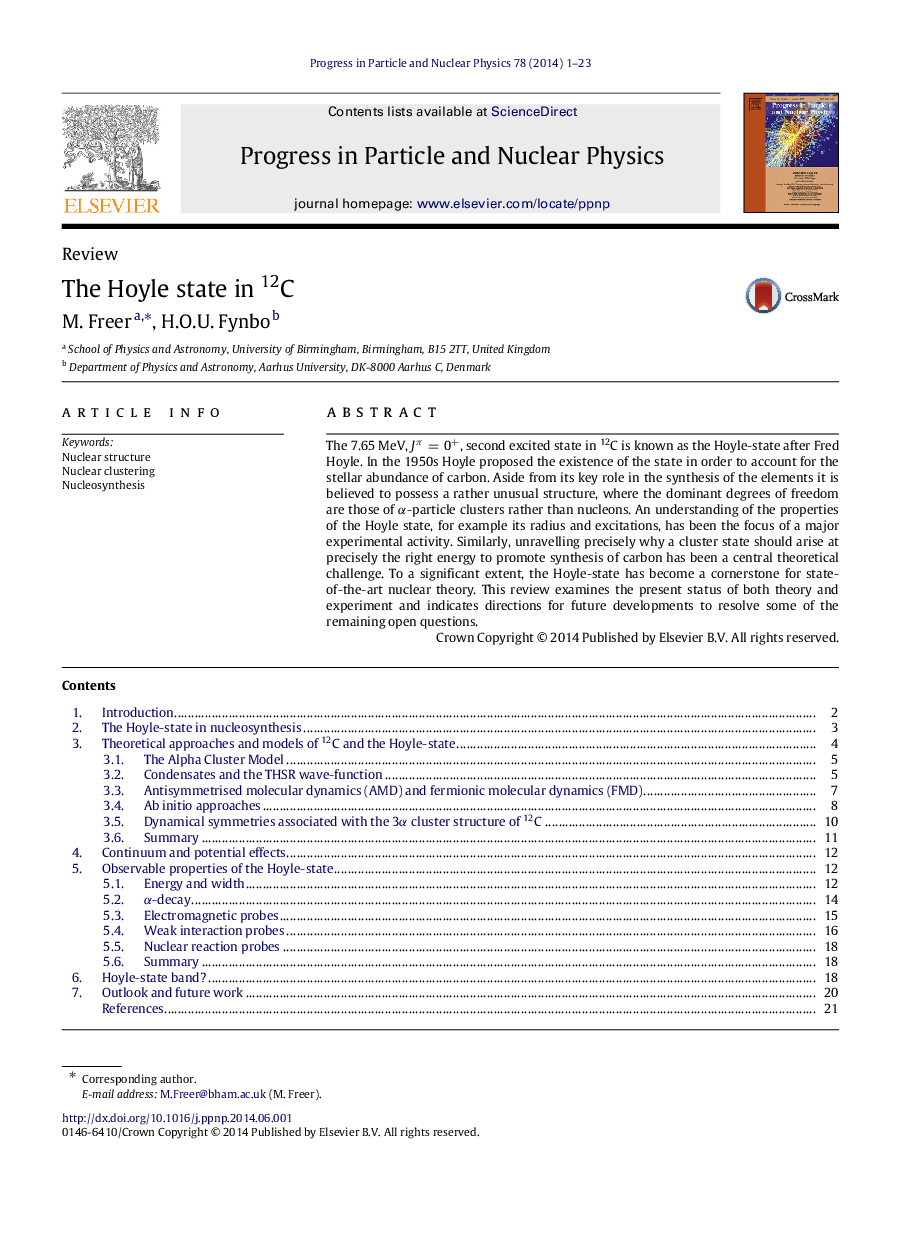| Article ID | Journal | Published Year | Pages | File Type |
|---|---|---|---|---|
| 1855037 | Progress in Particle and Nuclear Physics | 2014 | 23 Pages |
The 7.65 MeV, Jπ=0+Jπ=0+, second excited state in 12C is known as the Hoyle-state after Fred Hoyle. In the 1950s Hoyle proposed the existence of the state in order to account for the stellar abundance of carbon. Aside from its key role in the synthesis of the elements it is believed to possess a rather unusual structure, where the dominant degrees of freedom are those of αα-particle clusters rather than nucleons. An understanding of the properties of the Hoyle state, for example its radius and excitations, has been the focus of a major experimental activity. Similarly, unravelling precisely why a cluster state should arise at precisely the right energy to promote synthesis of carbon has been a central theoretical challenge. To a significant extent, the Hoyle-state has become a cornerstone for state-of-the-art nuclear theory. This review examines the present status of both theory and experiment and indicates directions for future developments to resolve some of the remaining open questions.
